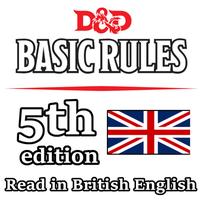The D20
Does an adventurer's sword swing hurt a dragon or just bounce off its iron-hard scales? Will the ogre believe an outrageous bluff? Can a character swim across a raging river? Can a character avoid the main blast of a fireball, or does he or she take full damage from the blaze? In cases where the outcome of an action is uncertain, the Dungeons & Dragons game relies on rolls of a 20-sided die, a d20, to determine success or failure. Every character and monster in the game has capabilities defined by six ability scores. The abilities are Strength, Dexterity, Constitution, Intelligence, Wisdom, and Charisma, and they typically range from 3 to 18 for most adventurers. (Monsters might have scores as low as 1 or as high as 30.) These ability scores, and the ability modifiers derived from them, are the basis for almost every d20 roll that a player makes on a character's or monster's behalf.
Ability checks, attack rolls, and saving throws are the three main kinds of d20 rolls, forming the core of the rules of the game. All three follow these simple steps.
1. Roll the die and add a modifier. Roll a d20 and add the relevant modifier. This is typically the modifier derived from one of the six ability scores, and it sometimes includes a proficiency bonus to reflect a character's particular skill. (See chapter 1 for details on each ability and how to determine an ability's modifier.)
2. Apply circumstantial bonuses and penalties. A class feature, a spell, a particular circumstance, or some other effect might give a bonus or penalty to the check.
3. Compare the total to a target number. If the total equals or exceeds the target number, the ability check, attack roll, or saving throw is a success. Otherwise, it's a failure. The DM is usually the one who determines target numbers and tells players whether their ability checks, attack rolls, and saving throws succeed or fail.
The target number for an ability check or a saving throw is called a Difficulty Class (DC). The target number for an attack roll is called an Armor Class (AC).
This simple rule governs the resolution of most tasks in D&D play. Chapter 7 provides more detailed rules for using the d20 in the game.

